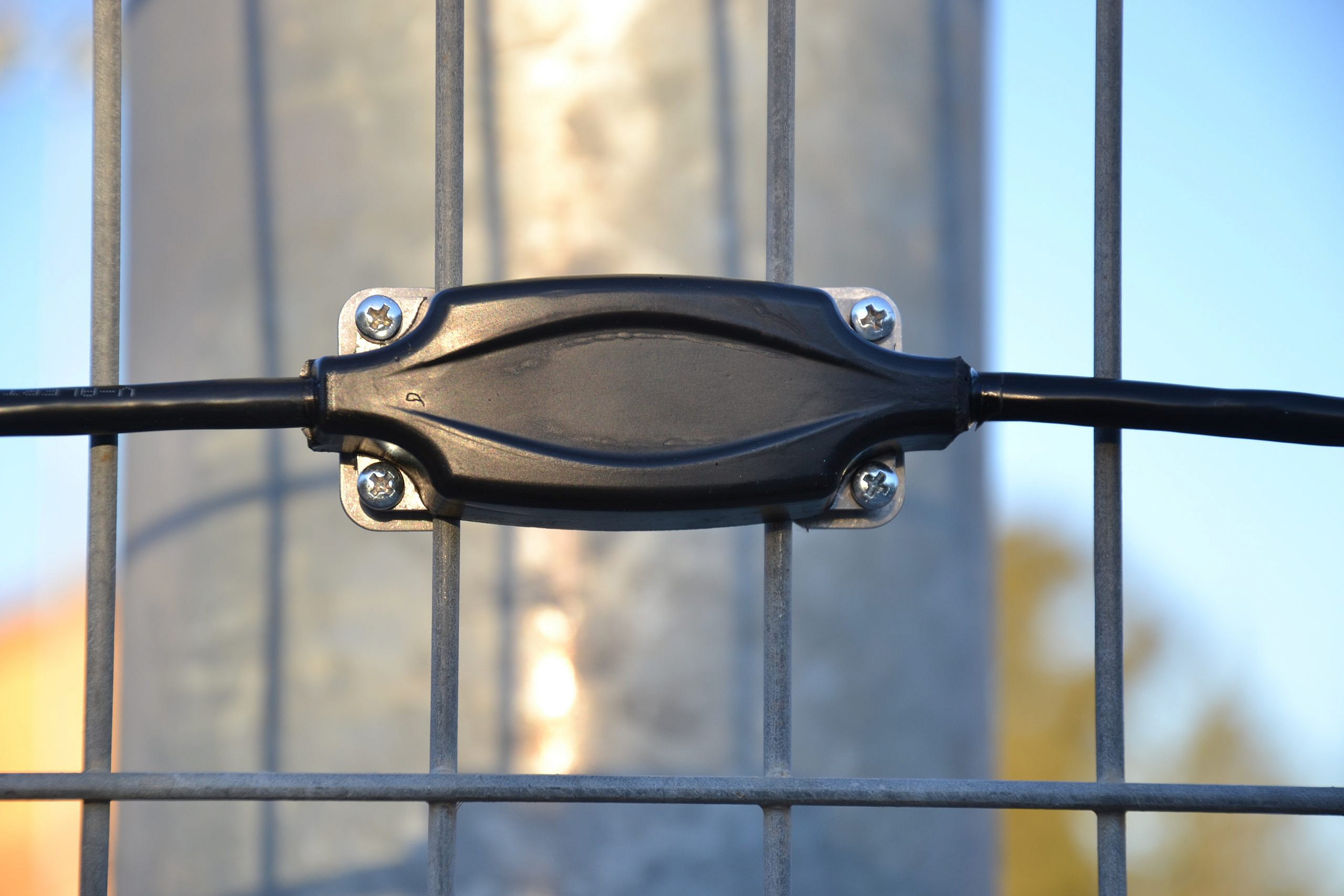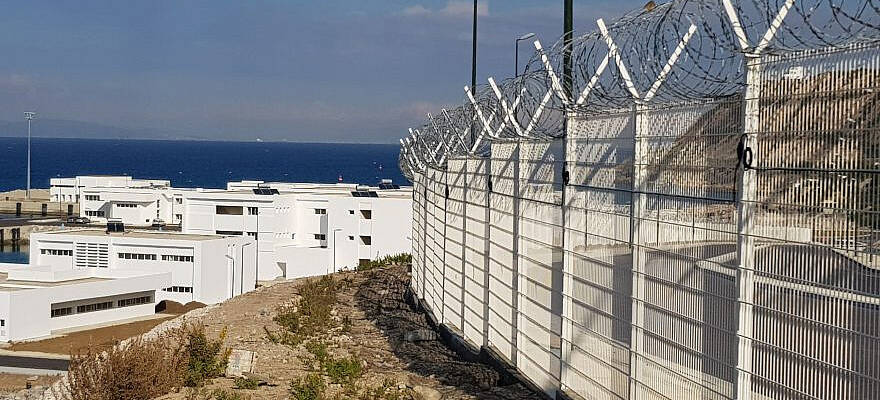GM Afcon’s V-Alert system differentiates between movement caused by wind or rain, for example, and an intruder, reducing false alarms to a minimum.
By JNS
Israeli company GM Afcon’s V-Alert perimeter intrusion detection system employs highly advanced technology to defend a growing number of borders and critical sites, in Israel and internationally.
GM Afcon’s electronic-sensor system is appearing around sensitive borders, airports, ports, database servers, industrial sites, power plants and strategic military bases.
At the heart of the Petach Tikvah-based company’s technology is the V-Alert sensor, an electronic detector that provides an independent, pinpoint alarm when moved by an intruder. When networks of such sensors are installed on barriers, and mixed with advanced algorithms that monitor the sensor data and decide when to issue alerts, human operators receive intrusion warnings that are extremely precise and timely, while false alarms—the bane of the perimeter detection world—are reduced to a minimum.
In 2013, the GM company joined the Israeli Afcon Group, a group of companies that work in fields as diverse as air conditioning, defense and parking systems, with a combined annual turnover of 2 billion shekels ($550 billion).
“We are an independent daughter company of the Afcon Group,” Gil Malec, managing director at GM Afcon Security Technologies, told The Circuit digital publication. GM comes from Malec’s initials and also stands for “Gil and Martin,” with the company’s exports director being Martin Kowen.
Malec spent years supplying agricultural clients with electric fences. In 1998, he switched to the security sector, following a dramatic rise in disturbances and security incidents in the border Gaza area. He began creating security fence solutions; they were quickly adopted by Israeli communities and the IDF Home Front Command.
“This synergy with Afcon provides us with an ability to offer end-to-end solutions that include not only perimeter fences but also other systems like entry systems, CCTV and more. It provides us with financial resilience—we can participate in large projects and avoid economic challenges,” said Malec.
The majority of GM Afcon’s 15 people work in research and development as the company both directly supplies a range of clients and sells to a variety of distributors.

Borders, communities and bases
“Our solution is the only one in Israel that has been authorized for use by all Israeli security organizations,” said Malec. This includes the Israel Defense Forces, which approved the solution for installation on the borders, in communities that require protection as well as at bases. It also includes the National Security Council, the IDF Home Front Command, the Israel Police and the Prime Minister’s Office.
The V-Alert has also been installed on borders abroad that the company cannot name. Other clients include Oslo Airport and the Spanish Aviation Safety and Security Agency.
Kowen said, “The majority of our clients are critical infrastructure providers—airports, oil and gas installations, power plants, as well as factories and warehouses. We work in several countries including Ukraine, Norway, Sweden and Spain, and we have projects in Mexico, India, Korea and Uzbekistan.”
GM Afcon conducted a great deal of business in Ukraine before the outbreak of the war, which led to a pause lasting some seven months, Kowen said. Activity has recently resumed as the Ukrainians engage in rebuilding in some areas, he continued.
Malec said the company has some 25 years of experience in the perimeter defense world, adding that the first years were dedicated to electrifying primarily agricultural fences.
“We developed the world’s first electronic detector in which each sensor independently transmits data to the operator in charge of monitoring the perimeter,” he said.
While older sensors would issue alerts whenever they moved, GM Afcon’s system is based on sensors continuously sending data to the controller, who can then see which detector issued an alert within a group of them.
The wind and the rain
Since a fence or any other kind of barrier moves when someone tries to climb or cut it, or otherwise gain unauthorized entry, detectors are designed to issue an alert when moved. However, until 2010, such systems struggled to differentiate between movement caused by wind or rain, for example, and an intruder, since they lacked electronic components that could measure and analyze precise movement data.
“There was no data involved in those systems. As soon as there was movement, or as soon as sensors were disconnected from their communications line, they issued an alert. These systems could not compare data from different detectors. With so little information available to the controller, many false alarms were generated, primarily by environmental factors, and the level of detection was low,” said Malec.
GM Afcon realized that the solution lay in detectors that could transmit data individually and immediately to the control center, and a system that could compare data from the sensors, so that it can distinguish similar movement patterns across many sensors—indicating wind, for example—from other kinds of more suspicious patterns.
The V-Alert perimeter measures movements on the X and Y axes of the barrier hundreds of times per second, on each axis separately, and searches for anomalies.
According to Malec, algorithms play a vital role in the product, since they receive all of this data and then make decisions on when to issue alerts and from where. When combined with cameras, such systems can get operators to tilt and zoom visual sensors on exactly where the suspicious movement is occurring, rather than broadly scanning for suspects within a 100-meter radius.
“The camera immediately jumps to the relevant area, saving both personnel and money,” said Malec.
Demand for the protection of data centers is growing, noted Kowen and Malec.
In Israel, V-Alert sensors are also used to protect sites with hazardous chemicals.
An Israeli defense source, who cannot be named for security reasons, said that GM Afcon’s technology is highly advanced. “They have sensors that are built with precision technology,” he said. “When you receive an indication from one sensor, you can immediately see if you receive another alert to the right or left of the first alert, and then determine whether there is a true alert or not.”
The technology, which was first introduced to the market in 2008, represented a breakthrough before spreading and improving its capabilities, and gaining widespread acceptance in the defense world, said the source.
“This technology can also be used as a platform for other things. For example, if you spread out cable sensors on a fence, you can use it for new functions in the future, such as installing a listening device on the cable every three meters. The communication cables carrying the data have the potential to carry more information,” said the defense source.
Such an integrated system can also feature loudspeakers, enabling operators to tell intruders that they’ve been spotted and to activate just the right loudspeaker to do so.
